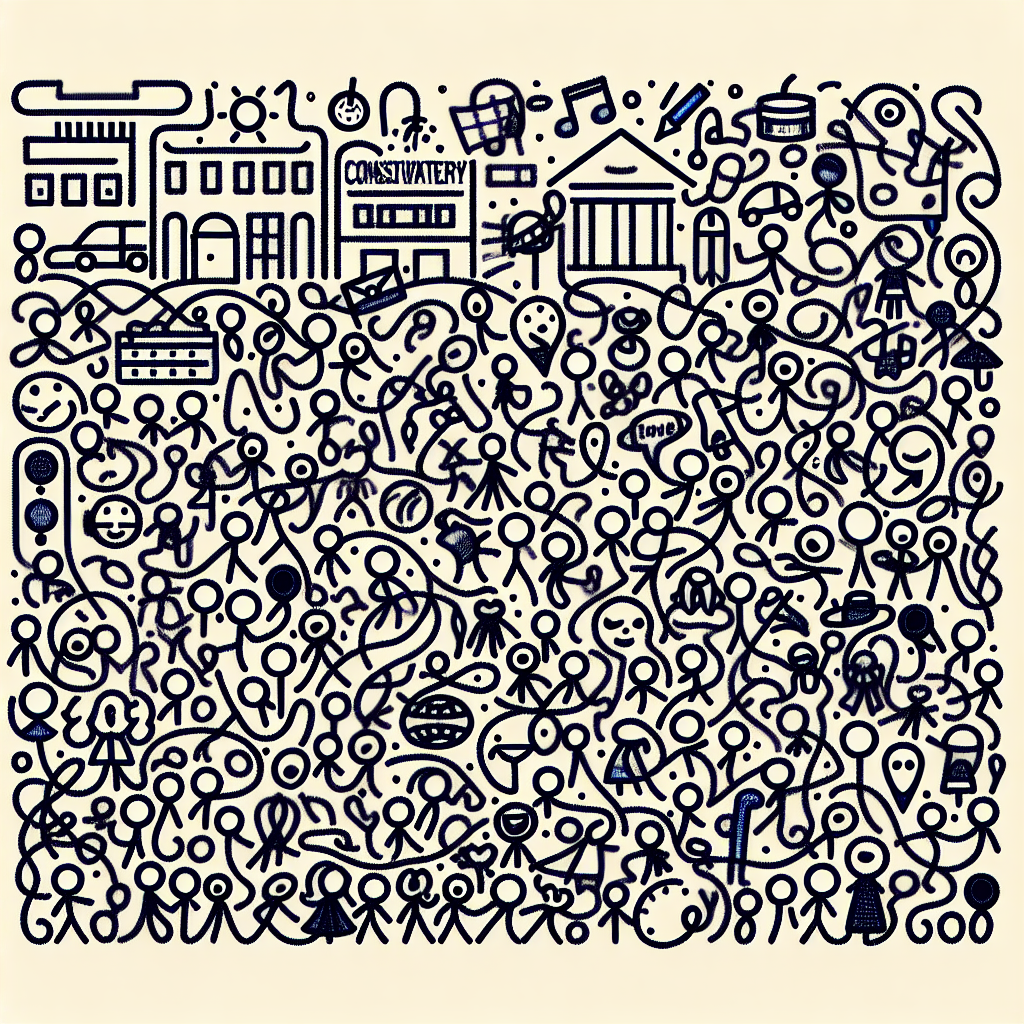Introduction to AMDA
The American Musical and Dramatic Academy (AMDA) is a well-established performing arts conservatory that specializes in training students for careers in acting, musical theatre, and dance. Founded in 1964, AMDA has built a strong reputation for its rigorous, performance-based curriculum and its focus on preparing students for the demands of the entertainment industry.
AMDA operates campuses in two major hubs of the performing arts world: New York City and Los Angeles. These locations offer students direct access to the heart of the theatre and film industries, providing valuable opportunities for networking and real-world experience.
As a selective institution, AMDA’s programs attract aspiring performers from around the globe. Its notable alumni and strong industry connections contribute to its status as a premier conservatory, making the amda acceptance rate a key consideration for prospective students.

📊 Understanding AMDA's Acceptance Rate
What Is an Acceptance Rate?
An acceptance rate is the percentage of applicants who are offered admission to a college or university. It is calculated by dividing the number of admitted students by the total number of applicants, then multiplying by 100. This metric helps indicate how selective an institution is—the lower the acceptance rate, the more competitive the school.
Acceptance Rate for 2023–2024
For the 2023–2024 academic year, the American Musical and Dramatic Academy (AMDA) received 6,580 applications. Of those, 1,626 students were admitted, resulting in an acceptance rate of 24.7% (univstats.com). This figure reflects a selective admissions process, suggesting that AMDA evaluates applicants rigorously.
Comparison to Industry Averages
Compared to other top performing arts and conservatory programs, AMDA’s acceptance rate of 24.7% positions it as a moderately selective institution. For instance, Juilliard and the Curtis Institute of Music are known for acceptance rates below 10%, making them significantly more competitive. On the other hand, some regional performing arts colleges may admit a larger percentage of applicants. AMDA’s rate indicates a balance between accessibility and selectivity, attracting serious performing arts students while maintaining high standards.

📈 Enrollment Yield and What It Means
Definition and Relevance of Enrollment Yield
Enrollment yield is the percentage of admitted students who choose to enroll at a given institution. It serves as a key indicator of both student commitment and the overall desirability of a college or university. A higher enrollment yield typically reflects strong applicant interest and alignment between student expectations and what the school offers. Conversely, a lower yield may suggest that students are using the school as a backup option or that the institution faces stiff competition from peer schools.
AMDA’s Enrollment Yield Metrics
At the American Musical and Dramatic Academy (AMDA), 1,626 students were admitted, and 387 of those students chose to enroll. This results in an enrollment yield of 23.8% (datausa.io).
Interpreting the Numbers
An enrollment yield of 23.8% suggests that while AMDA attracts a substantial applicant pool, less than one in four admitted students ultimately decides to attend. This figure may reflect the unique considerations students weigh when choosing a performing arts school. In this field, factors such as location, faculty reputation, specialization in particular disciplines (e.g., musical theatre vs. acting), and financial aid offerings play a critical role in final enrollment decisions. Given the competitive nature of performing arts education, students often apply to multiple specialized institutions and select the one that best fits their artistic and professional goals. Therefore, AMDA’s enrollment yield is a useful lens for understanding how it compares to other schools in terms of perceived value and fit.

Student Demographics & Diversity
Gender Breakdown
The American Musical and Dramatic Academy (AMDA) maintains a significantly higher percentage of female students, with a male-to-female ratio of 28:72 (edurank.org). This gender distribution reflects broader trends in performing arts programs, where female enrollment often surpasses male enrollment. Such disparities may be influenced by cultural perceptions of the performing arts, as well as varying levels of encouragement and support for students of different genders pursuing careers in this field.
Racial and Ethnic Composition
AMDA’s student body is racially and ethnically diverse. The largest racial group is White students, who make up 32.6% of the population. Hispanic or Latino students represent 18.7%, while Black or African American students account for 16.6% (datausa.io). This level of diversity contributes to a dynamic and inclusive learning environment that enriches the academic and artistic experience. The institution supports various diversity initiatives aimed at fostering equity and representation across its community—an important consideration for students evaluating the AMDA acceptance rate alongside campus culture.

🎓 Graduation Rate and Outcomes
AMDA’s Graduation Rate
The American Musical and Dramatic Academy (AMDA) has a graduation rate of 58% (scholarships.com). This figure is slightly below the national average for private, non-profit four-year institutions in the U.S., which typically ranges around 60-65%. However, it's important to consider the unique nature of AMDA’s curriculum and student body when interpreting this statistic.
AMDA’s intensive, performance-based programs present both high expectations and rigorous demands, which can influence student completion rates. Many students enter the academy with strong ambitions to launch entertainment careers. In some cases, students leave before graduation to pursue professional opportunities, which may impact the overall graduation rate but still reflect successful outcomes.
Alumni Success and Career Pathways
AMDA offers a range of career support services aimed at helping students transition into the competitive arts industry. These include audition preparation, networking events, and individualized career counseling. The institution maintains strong ties with industry professionals to help students gain exposure and build connections.
The school also boasts a notable roster of alumni who have established careers in film, television, theater, and music. Graduates have gone on to perform on Broadway, appear in major television productions, and work in national tours and international entertainment ventures. The strength of the alumni network and the visibility of its graduates in the entertainment industry reflect positively on AMDA’s outcomes, offering context alongside the amda acceptance rate.

Admissions Process and Requirements
Application Components
The AMDA acceptance rate reflects the school’s competitive nature, making it essential for applicants to understand and meet all admissions requirements. A complete application to the American Musical and Dramatic Academy (AMDA) includes several key components:
- Audition Requirements: All applicants must complete an audition, which varies based on the program. For acting, students typically perform two contrasting monologues. Musical theatre applicants are required to present one monologue and one or two vocal selections. Dance components may be requested for certain programs, showcasing technique and performance ability.
- Application Form and Fee: Applicants must submit the official application form along with a non-refundable application fee. This form gathers academic history, program preferences, and personal details.
- Personal Statement and Letters of Recommendation: A written personal statement is required, usually addressing the applicant's passion for the performing arts and career goals. Additionally, one or more letters of recommendation from teachers, directors, or professionals familiar with the applicant’s talent and work ethic are needed.
Tips for a Competitive Application
Given the selective AMDA acceptance rate, it’s important to make a strong impression during the admissions process:
- How to Stand Out in the Audition: Choose audition pieces that showcase your strengths, personality, and range. Preparation is crucial—memorize your material, rehearse thoroughly, and approach the performance with confidence and authenticity. Tailoring your selections to reflect your unique voice can help set you apart from other candidates.
- Portfolio Guidance for Prospective Students: While not all programs require a portfolio, having a professional resume, headshots, and video reels (if applicable) can enhance your application. These materials should be up-to-date and clearly present your training and experience in the performing arts.
Understanding and addressing each component of the admissions process can increase your chances of success, especially given the competitive AMDA acceptance rate.

What These Numbers Mean for Prospective Students
Interpreting Selectivity and Fit
Understanding the AMDA acceptance rate can help prospective students gauge the school's selectivity. A lower acceptance rate may indicate a competitive admissions process, which can be appealing to students seeking a rigorous and prestigious program. However, selectivity alone should not be the deciding factor when determining if AMDA is the right fit.
Students should consider how AMDA's curriculum, faculty, and performance opportunities align with their personal and professional goals. While attending a well-known performing arts school can open doors, it’s essential to balance that prestige with practical concerns like tuition costs, financial aid availability, and long-term career plans. Fit is ultimately about how well a school supports a student’s growth, both artistically and personally.
Making an Informed Decision
Beyond acceptance rates, visiting AMDA’s campus can provide valuable insight into the school’s environment and community. Speaking directly with admissions counselors, current students, and faculty can help clarify whether the school meets your expectations and needs.
It's also important to consider the school’s yield rate—the percentage of admitted students who choose to enroll. A higher yield may suggest strong student satisfaction and a good institutional reputation. Additionally, diversity within the student body can contribute to a richer educational experience, particularly in the performing arts where collaboration and different perspectives are key. Factoring in these elements can help prospective students make a well-rounded and informed decision about applying to AMDA.

Conclusion
AMDA's acceptance rate offers insight into the school's selective admissions landscape. With campuses in both New York and Los Angeles, AMDA attracts thousands of applicants each year, admitting only a portion based on talent, potential, and fit for a rigorous performing arts education.
While the amda acceptance rate may appear moderately competitive, it reflects a holistic admissions process that considers more than just academic metrics. Prospective students should understand that AMDA looks for passion, commitment, and creative promise. Once admitted, students benefit from intensive, hands-on training and access to industry professionals, which can lead to strong career outcomes in the performing arts.
Ultimately, understanding the amda acceptance rate is just one step in evaluating whether the school aligns with a student's goals. It's essential to research thoroughly, prepare auditions and materials carefully, and consider the full experience AMDA offers.














